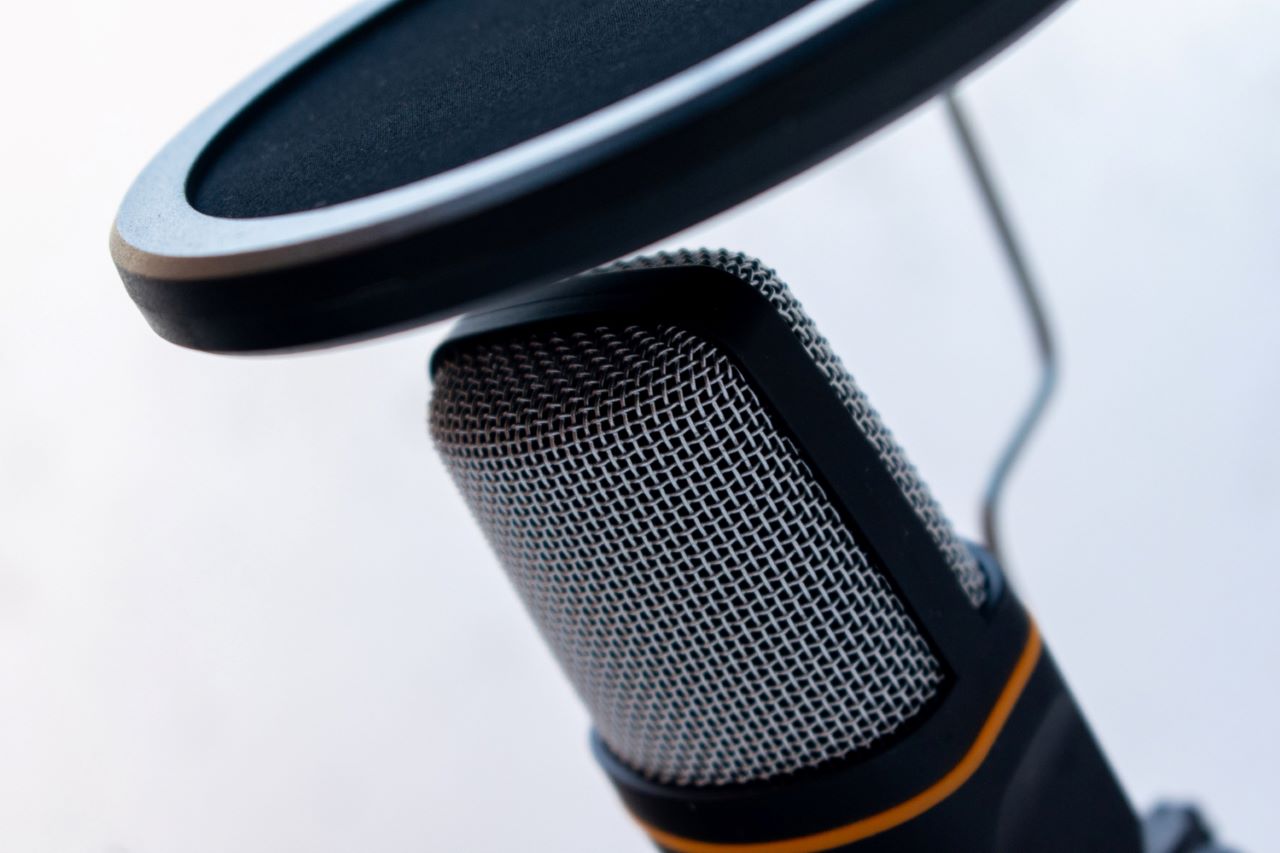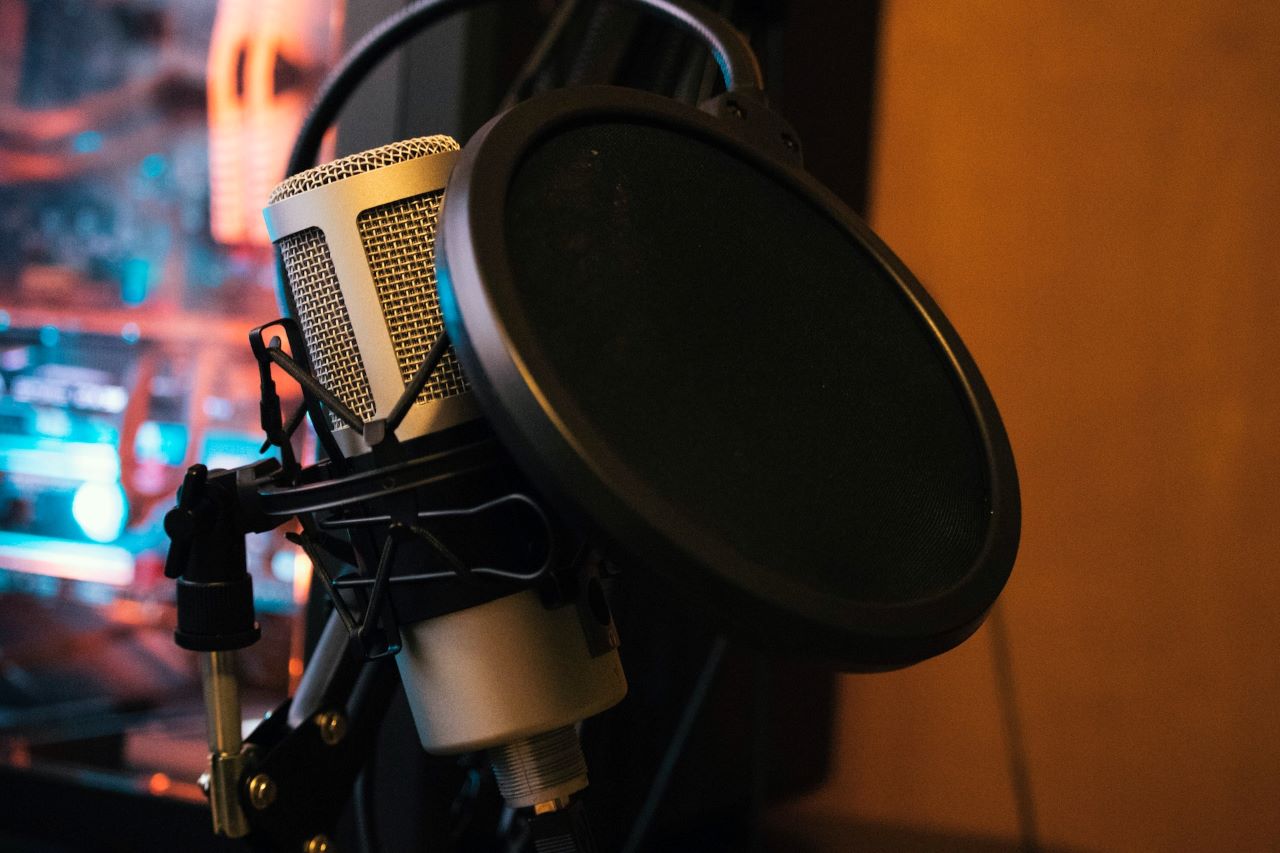Picture this: You’re in the middle of recording vocals for your latest podcast episode, vlog, or song. You’re delivering your best performance yet. But when you play it back, there’s an annoying hissing or popping sound every time you pronounce words with ‘p’s and ‘t’s. Frustrating, right? That’s where a pop filter steps in. Think of it as your personal audio superhero, swooping in to save your recordings from those pesky plosive sounds.
In today’s digitally-driven world, where content is king, crisp and clear audio isn’t just a luxury; it’s a necessity. Whether you’re a budding podcaster, a YouTube sensation in the making, or an aspiring musician, the quality of your audio can make or break your content. This is where understanding and utilizing your own pop filter becomes crucial.
In this article, we’ll explore what a pop filter is, its different types, and why it’s an indispensable tool for anyone looking to produce professional-quality audio. We’ll demystify the technical jargon and focus on practical, real-life applications, ensuring you walk away with knowledge that’s not just theoretical but truly applicable.
Contents
What Is A Pop Filter?
Ever wondered why your recordings sometimes capture more than just your voice? Like those sharp, jarring sounds that can ruin an otherwise perfect take? This is where a pop shield comes into play. It’s not just another piece of equipment; it’s your first line of defense against unwanted noise.
A pop filter, often a simple screen, is placed between your microphone and your mouth. It serves a vital purpose: it softens the blow of air caused by plosives – those hard ‘P’, ‘T’, and ‘B’ sounds that can create a pop in your audio. But it’s more than just a shield. It also helps to maintain a consistent distance from the microphone, promoting even sound levels and clarity in your recordings.
Now, you might think, “Can’t I just be careful with my pronunciation?” Sure, but why risk it? An external pop filter ensures that your recordings are clear, professional, and free of distractions, letting your content shine through without the interference of unwelcome sounds.
Types Of Pop Filters

Image by wirestock on Freepik
When it comes to choosing a pop filter, it’s not a one-size-fits-all situation. Different types cater to various needs and preferences. Let’s break down the most common types:
- Metal Pop Filters: These are built for durability. Metal pop filters often feature a metal mesh that diffuses air blasts effectively. They’re a favorite for their robustness and longevity, making them a wise investment for those who record frequently.
- Nylon Pop Filters: The classic choice. Nylon pop filters, with their fabric design, are excellent at dispersing air pressure and reducing plosives. They’re lightweight, flexible, and generally more affordable than metal options. Great for beginners or home studios where gentle, regular use is anticipated.
- Foam Pop Filters: Typically used as a windscreen that fits directly over the microphone, internal pop filters are fantastic for minimizing background noise and wind interference. They’re particularly useful for outdoor recordings or in environments with a lot of ambient noise.
Each type has its unique strengths. Metal filters are durable and easy to clean, nylon filters offer gentle sound softening, and foam filters excel in noisy environments. Your choice will depend on your specific needs, recording environment, and personal preference.
Remember, the right pop filter can elevate your audio quality significantly. It’s not just about stopping popping noises; it’s about capturing the true essence of your voice or instrument, ensuring that your audience hears every nuance and inflection as you intended.
Related: Best Pop Filters
The Role Of Pop Filters In Audio Quality
You might be wondering, “How significant can the impact of a pop filter really be?” The answer is: hugely significant. Pop filters do more than just block air blasts; they’re critical for achieving clear, professional-sounding audio.
- Elimination of Plosives: The primary role of a pop filter is to prevent plosives – those harsh ‘P’, ‘T’, and ‘B’ sounds that can cause spikes in your audio recording. By softening these sounds, pop filters ensure that your recording is smooth and consistent without any jarring noises.
- Protection of Microphone: Over time, spit and moisture from speaking or singing can damage your microphone. A pop filter acts as a barrier, protecting your valuable equipment and extending its lifespan.
- Consistent Audio Levels: By creating a physical barrier between you and the microphone, a pop filter encourages you to maintain a consistent distance while recording. This consistency is key for even sound levels and is essential for professional-quality recordings.
- Enhanced Clarity: With plosives and background noise under control, your words become clearer, making your content more engaging and easier to understand. This clarity is especially crucial for podcasts, voiceovers, and vocal recordings, where every word counts.
In short, a pop filter is an unsung hero in the world of audio recording. It may seem like a small addition to your setup, but its impact on the quality of your recordings can be profound. By ensuring clear, plosive-free audio, a pop filter helps you present your best auditory self to the world, whether you’re podcasting, streaming, or recording music.
Making The Decision: Do You Need A Pop Filter?
When it comes to determining the necessity of a pop filter in your recording arsenal, it’s a decision that hinges on the subtleties of your recording needs and the nuances of your setup. It might seem like a minor detail, but the right choice can elevate your audio quality significantly.
Assessing Your Recording Needs
Consider your recording environment and the nature of your work. If you’re dealing with vocal recordings, podcasts, or voice-overs, a pop filter becomes more than a luxury; it’s a necessity to combat those pesky plosives. The type of microphone you use also plays a crucial role.
For instance, large-diaphragm condenser microphones are particularly sensitive to plosive sounds, making a pop filter an essential companion. Also, your recording environment can influence your decision.
A controlled studio setting might mitigate some external noise issues, but it won’t shield you from plosives. And if your speech naturally emphasizes plosive sounds, a pop filter is indispensable for maintaining the clarity and professionalism of your recordings.
Cost-Benefit Analysis
Pop filters come in various price ranges, with options like nylon offering an affordable solution, while metal variants present a more durable, albeit pricier, alternative. The cost of a pop filter, when weighed against the benefits it brings to the table, often tilts in favor of the investment. The immediate improvement in sound clarity and the protection it offers your microphone can save you from future expenses.
This makes a pop filter not just a purchase but an investment in the longevity and quality of your recordings. Moreover, considering their ease of installation and versatility across different recording scenarios, a pop filter’s value in your setup becomes even more apparent.
Additional Considerations

Image by DCStudio on Freepik
Beyond the technical aspects, think about the practicality and versatility of a pop filter. These tools are straightforward to install and can adapt to various recording situations, making them an efficient and flexible choice for improving audio quality.
The simplicity and multifunctionality of pop filters add to their appeal, making them a wise choice for anyone serious about producing high-quality audio content.
Related: Pop Filter For Rode PodMic
The Importance Of Pop Filters In Various Recording Scenarios
The realm of audio recording is diverse, ranging from professional studio setups to home studios and field recordings. Each scenario presents unique challenges and demands specific solutions for optimal sound quality.
Professional Studio Recording
In a professional studio, where every sound is magnified and every detail matters, a pop filter becomes an indispensable tool. Here, recording is an art form, and the clarity of audio is paramount. The studio environment, equipped with high-quality, sensitive microphones, often accentuates plosives, making pop filters critical for maintaining the purity of the audio.
They serve as a subtle yet powerful tool, preserving the nuances of the voice or instrument while preventing any harsh plosive sounds from distorting the recording. For voice-over artists, singers, and narrators, a pop filter in a studio setting isn’t just an accessory; it’s a key component in capturing the true essence of their performance.
Home Studios And Podcasting
The rise of home studios and podcasting has democratized audio production, but it also means dealing with less-than-ideal acoustic environments. In these settings, a pop filter is your first line of defense against audio imperfections. While home studios might not have the same level of equipment as professional studios, the need for clear, crisp audio remains the same.
Pop filters in these environments help mitigate the limitations of the space, reducing plosives and ensuring that the voice is captured as intended. For podcasters, where the voice is the primary medium of connection with the audience, a pop filter ensures that the message is delivered without any distracting noises.
Field And On-Site Recordings

Image by Freepik
Field recordings present a different set of challenges, from environmental noises to the absence of controlled acoustics. In such scenarios, a pop filter, especially those designed for recording outdoors use, can be a game-changer.
It not only addresses the issue of plosives but also helps in reducing wind noise and other ambient sounds that can compromise the quality of the recording. For journalists, outdoor vloggers, and field recordists, a pop filter adds a layer of professionalism to their audio, ensuring that the focus remains on the content, not on the quality of the sound.
Final Thoughts
From professional studios to home setups and on-the-go recordings, the importance of a pop filter cannot be overstated. It’s a simple yet essential tool that significantly enhances audio quality, regardless of where you’re recording. A pop filter ensures that your voice is heard as it should be – clear, crisp, and free from distracting plosives.
Whether you’re a seasoned professional or just starting out, investing in a pop filter is a small step that can have a huge impact on the quality of your recordings. It’s about giving your content the clarity it deserves, allowing your audience to focus on your message, not on the quality of your sound. In the end, a pop filter isn’t just an accessory; it’s a vital component in your journey to producing top-notch audio content.
